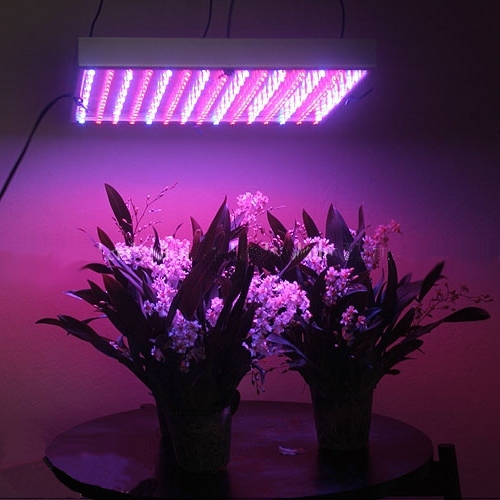It’s well known that we require general, ambient lighting in our homes, but there are several things to think about before getting on the ladder. To avoid unpleasant surprises, it’s beneficial to know how your new light installation will look before you start. If you’ve replaced your incandescent bulbs with compact florescent ones with a screw-in base, you may have noticed that the light is whiter—or even if you’ve swapped out your vintage Christmas lights for new LED microlights. Every piece of illumination isn’t created equal.
1. Use natural light to your advantage.
Natural light may be sufficient and inviting in rooms used only during the day. The first step should be passive illumination.
Tip: Check with your local authorities to see whether you can increase or add fenestration (openings in a building) if needed.

2. Expose your rooms to as much natural light as possible.
In the northern hemisphere, east-, west- and south-facing rooms are ideal for increasing outside illumination. Every exposure has its own set of light characteristics. However, north-facing rooms require the use of an artificial light source in order to function effectively.
Tip: To get the most out of natural light, add windows to the south side of your house.
3. Take advantage of natural light.
This space has a lot of natural light, relying on an under-the-radar approach. When you add mirrors, such as the ones on the wall beside the sectional here, you reflect and magnify the sunlight in the room.
Tip: If you have a dark basement or family room, install a mirror opposite any accessible window. Even if the window is tiny, it will bounce more light around.
4. Enhance the light.
The white paint in a room like this, with only one small window, amplifies the light. Mirrors on either side of the window opening would also enhance natural light.
Tip: Take the time to research your paint colour’s light reflectance value (LRV), which measures how much light a colour absorbs and reflects. Light reflectance values range from 0 to 100, with higher numbers reflecting more light. The quality of the paint job has an impact as well (lighter colours absorb more; darker ones reflect more).
5. Recessed lighting is a popular solution.
Recessed lighting is a common problem solver. The goal is to create an area with no dark patches or unlit spaces by utilizing recessed lighting. Because each light will produce a pool of light according to its beam spread, the ceiling height will influence where the lights are placed.
Tip: Recessed lighting may be used in any space that requires more illumination than is provided by natural light sources. Halogen MR16 bulbs, which dominate the market today, are a great way to save money if you’re on a tight budget. If you’re prepared to spend more, consider low-voltage LEDs, which are becoming increasingly popular in residential construction projects. LEDs are an ideal choice for clean, white illumination. Although the initial cost of installing them would be greater, they can produce light through a smaller fixture and last indefinitely thanks to their longevity and efficiency advantages over incandescent lights.

6. Take into account your age and health.
We may become more sensitive to light as we get older, but we also require more illumination to see tiny details. Reading lights are required, however, understanding sensitivities can make the overall space more soothing.
For a variety of reasons, certain people are sensitive to light. Some have migraines or epilepsy (me too). Photophobia is caused by a variety of factors, including eye colour, medication, and some medical conditions (let me in).
Tip: Use dimmers on all of your lightings. More importantly, create zones for your lighting so you can turn off a section that isn’t in use. Install lighting for a primary sitting area on one circuit and perimeter lights on another when possible. You may minimize the amount of light bouncing off the walls by shutting down lighting along the perimeter.
7. Increase the energy level.
Some areas in your home are important hubs for family gatherings and departures. Ambient light should be used to increase energy in these spaces.
Tip: Do not cut corners on lighting in high-activity-level rooms. The family room, breakfast nook, and homework area in your kitchen are all examples of high-activity areas that require additional light. When determining the need for wattage, err on the side of more rather than less.
Take a second look at fluorescent lighting. With so many improvements, it’s time to reconsider them. They offer the most light for the least cost, making them ideal for ambient illumination. They don’t produce much heat and use little electricity. Fluorescent lights in recessed can form aren’t the large 4-foot tubes you may recall from grade school; they’re now available.
8. Play with colour, materials, finishes, and placement.
A bright room makes me happy and active. For others, a more cave-like environment will have the same beneficial impact. It’s all about finding your personal zone when it comes to ambient lighting.
Tip: To give your space more personality, use a few strategically placed lights.
Look beyond the grid. Consider the features of the space while developing a lighting plan and think about patterns and shapes, drawing on the geometry of the facility.
The overall look of a room, including the colour, materials, and finish, has an impact on whether it is bright and airy or dark and moody. Take all of these things into account. Lighting can either complement or counteract these features.
Lighting is a very technical and complex field. There are so many variables to consider that working with a top lighting consultant will assist you in getting the most optimal solution for your specific requirements.



